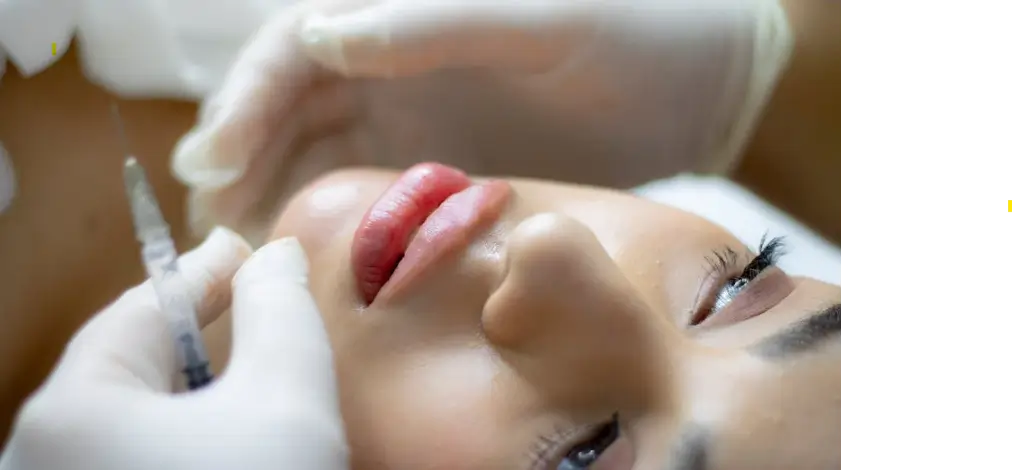What Are Cosmetic Injections and How Do They Work?
Let’s be honest, aging is natural, but sometimes it feels like our faces are shifting faster than we are. Fine lines, volume loss, sagging skin, these little reminders of time can show up sooner than expected.
Thankfully, we live in a time when turning back the clock doesn’t require surgery or weeks of recovery. That’s where cosmetic injections come in.
From celebrities to your coworkers, more people are embracing nonsurgical treatments to refresh their appearance. But what are these injectables exactly? And how do they work?
In this guide, we’ll break down the science behind cosmetic injections, explore the different types (like Botox and dermal fillers), and explain what you can expect during treatment.
What Are Cosmetic Injections?
Cosmetic injections are minimally invasive treatments designed to enhance facial features, reduce signs of aging, and restore youthful volume, all without surgery.
Unlike facelifts or more invasive procedures, injectables require little to no downtime, making them a go-to for people with busy lifestyles.
These treatments fall into two primary categories:
- Neuromodulators: These relax the muscles that cause wrinkles, especially dynamic ones from facial expressions.
- Dermal Fillers: These restore lost volume, plump areas like the lips and cheeks, and smooth out static lines.
Cosmetic injections are typically quick, often done in under 30 minutes, and can provide visible results within days, sometimes even immediately.
Providers offering injection services tailor treatments to your unique goals, ensuring natural-looking results in a safe and professional setting.
How Do Cosmetic Injections Work?
Different injectables work in different ways, depending on your needs.
Neuromodulators, like Botox, work by temporarily blocking signals from nerves to specific facial muscles. This prevents those muscles from contracting, which helps soften the lines they create when you smile, frown, or squint. These treatments are ideal for expression-related wrinkles.
On the flip side, dermal fillers don’t affect muscle movement. Instead, they work by physically filling in lines or hollow areas in the face.
Most modern fillers are made from hyaluronic acid, a substance your body naturally produces. It’s like giving your skin a drink of water from the inside, instantly restoring plumpness and elasticity.
Since these procedures are noninvasive, they typically involve just a few tiny injections and maybe a bit of numbing cream. You can walk out of the clinic the same day, looking subtly refreshed, with no bandages or bruises (aside from maybe a small temporary bump or two).
Botox: The Wrinkle Relaxer
If cosmetic injections were a popularity contest, Botox would win by a landslide. It’s one of the most widely recognized names in aesthetic medicine, and for good reason.
Botox is a type of botulinum toxin that’s FDA-approved for reducing facial wrinkles by temporarily paralyzing the muscles underneath them.
Here’s how it works.
Over time, the constant motion of facial muscles leads to expression lines. Think forehead creases, crow’s feet, and those “11” lines between your eyebrows.
Botox targets the muscles responsible for these movements, giving your skin a break and allowing it to smooth out.
Typical treatment areas include:
- Forehead
- Between the eyebrows (glabellar lines)
- Around the eyes (crow’s feet)
Botox typically begins to show results within 3 to 5 days, with effects lasting around 3 to 4 months. It offers a fast, reliable way to smooth wrinkles and maintain a youthful appearance, without the stiff, “frozen” look.
Dermal Fillers: Plumping and Contouring
While Botox addresses muscle-related wrinkles, dermal fillers are the go-to solution for restoring volume and reshaping the face. As we age, our bodies produce less collagen and hyaluronic acid, leading to sagging, hollow areas, and deep folds.
Dermal fillers step in to add that volume back, instantly.
Common treatment areas for fillers include:
- Cheeks (to restore fullness and lift)
- Lips (to enhance shape and volume)
- Nasolabial folds (the lines running from nose to mouth)
- Chin and jawline (to define facial contours)
The results? Immediate. And depending on the product used, they can last from six months to two years.
The most common filler material is hyaluronic acid, which naturally integrates into your skin tissue. Fillers not only restore volume but also enhance hydration and improve elasticity in the treated areas.
Other Types of Cosmetic Injectables
Botox and fillers might be the most talked-about, but they’re far from your only options. Depending on your goals, your provider may recommend other injectable solutions.
- Dysport and Xeomin: Similar to Botox but with slight differences in how quickly they take effect and how the results appear.
- Sculptra: A collagen stimulator that works more gradually to improve facial volume and skin texture over time.
- Kybella: An injectable treatment that dissolves fat cells under the chin, ideal for those battling a double chin.
Choosing the right product depends on your unique goals, facial anatomy, and lifestyle. Experienced injection services will offer customized recommendations and guide you through each step to achieve balanced, natural-looking results.
The Process: What to Expect During Treatment
Never had an injection before? No worries, it’s less intimidating than it sounds. Here’s what the process usually looks like.
- Consultation — Your provider will assess your face, ask about your goals, and recommend a treatment plan. You’ll discuss your medical history to ensure you’re a safe candidate.
- Preparation — The area is cleaned, and a numbing cream may be applied. Some fillers even contain lidocaine to reduce discomfort during injection.
- Injection — Using ultra-fine needles, your injector delivers the product precisely where needed. The whole session usually takes less than 30 minutes.
- Aftercare — You might see minor swelling, redness, or bruising, but most people return to daily activities immediately. You’ll get instructions on how to care for your skin and what to avoid for the next 24–48 hours.
Many reputable clinics that specialize in injection services pride themselves on delivering personalized results in a professional, comfortable environment.
Who Is a Good Candidate?
You don’t need to wait until your 50s to start using cosmetic injections. In fact, many people start in their late 20s or early 30s as a preventative measure. That said, age isn’t the only factor.
You’re likely a good candidate if:
- You want to reduce signs of aging or enhance facial features.
- You are in generally good health.
- You have realistic expectations.
- You are not pregnant or breastfeeding.
Choosing a qualified injector is just as important as the product itself. It’s essential to find a licensed professional with in-depth knowledge of facial anatomy and a refined sense of aesthetics.
Are Cosmetic Injections Safe?
In the hands of an experienced provider, cosmetic injections are very safe. Products like Botox and most dermal fillers are FDA-approved and backed by years of clinical research.
Still, side effects can happen. The most common include:
- Redness or swelling at the injection site
- Temporary bruising
- Minor discomfort or tenderness
Serious complications, like allergic reactions, infections, or lumps, are rare but possible. To minimize risk, follow all aftercare instructions and avoid alcohol, blood thinners, and strenuous exercise immediately after your appointment.
Why Cosmetic Injections Are More Popular Than Ever
There’s no denying it, cosmetic injections are having a moment. What once felt exclusive to celebrities is now part of many people’s regular self-care routine. Here’s why:
- It’s fast. You can get treated on your lunch break.
- It’s affordable. Options exist for various budgets.
- It’s customizable. Treatments are tailored to your features, not cookie-cutter results.
- It’s subtle. Done right, you’ll look refreshed, not “done.”
With the rise of social media and Zoom meetings, more people are prioritizing their appearance. Professional injection services offer a low-commitment, high-reward way to look and feel your best.
Conclusion
Cosmetic injections have come a long way. They’re safe, effective, and accessible options for anyone looking to enhance their natural beauty without surgery.
From wrinkle-fighting Botox to volume-restoring fillers, these treatments are designed to help you look like the best version of yourself, not someone else.
The key? Finding a trusted provider who understands your goals and knows how to achieve them with precision. If you’re considering a treatment, look for injection services that deliver experienced care in a safe, welcoming environment.

